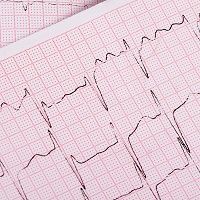Article
Top 5 'Possibly' Overused Tests and Procedures
Author(s):
Tests and diagnostic procedures often help physicians discover conditions or formulate treatments, but researchers say some tests are used far more often than they are worth. Here are 5 tests and procedures physicians should think twice about before prescribing.
Spending on healthcare is expected to top $3 trillion in 2014, according to the Centers for Medicare and Medicaid Services (CMS).
There are many reasons for that number, but one cause is believed to be the over-use of tests and treatments. It is believed that many physicians over-prescribe out of fear of malpractice lawsuits, although a recent study indicates that the answer may not be so simple.
However, studies suggest a few good places patients and physicians can start if they want to reduce unnecessary healthcare costs. The American Academy of Family Physicians, the ABIM Foundation and the National Physicians Alliance have all put forth data designed to highlight procedures they believe are often over-used. Most of the tests on the list make sense in certain cases, but are often used when the diagnostic benefit is marginal and/or the test or treatment will do little or nothing to speed recovery. That leads to strikingly high spending, despite the fact that some of the over-used tests are relatively inexpensive.
What follows is the AAFP’s list of the Top 5 possibly overused tests and procedures. The group put out the list in 2012 in hopes of encouraging physicians and patients to think twice about these particular procedures. Prices are based on “fair price” data from the Kelly Healthcare Blue Book, unless otherwise noted. The list is in random order:

Cost: $421-$741 (for CT scans); $791-$1,241 (MRI)
Why is it a problem? According to AAFP, imaging of the lower spine for pain before 6 weeks doesn’t improve outcomes, and many people feel better after several weeks without treatment. The tests often come at high costs and involve radiation exposure. AAFP notes lower back pain is the fifth most-common reason people go to a physician.

Cost: Varies. Amoxicillin, a common prescription for Sinusitis and other conditions, costs about $9.
Why is it a problem? AAFP specifically notes that prescription antibiotics are often unnecessary for the treatment of mild to moderate sinusitis. They note the condition usually resolves itself on its own, and physicians have tended to continue prescribing the drug at high rates (80% for sinusitis patients), despite the risk of side effects. Sinusitis-related doctor visits cost about $5.8 billion per year, AAFP says.

Cost: About $150 (source: WebMD)
Why is it a problem? AAFP’s guidelines for Dual-energy X-ray Absorptiometry screenings are simple: Don’t prescribe the test for people with no risk factors unless the person is a woman over the age of 65 or a man over the age of 70. Otherwise, AAFP says, the test fails the cost-effectiveness rule.

Cost: $35
Why is it a problem? Electrocardiograms have minimal, if any, benefit for asymptomatic, low-risk patients, AAFP said. There’s also the risk of false-positives, which can lead to further over-treatment and misdiagnoses.

Cost: $20-$30 (source: Healthday)
Why is it a problem? Pap smears are another case where the benefits depend on the specific demographics of the patient. Women under 21 years of age won’t benefit much from the test, because AAFP says most abnormalities found in adolescents go away on their own. Women who have had a hysterectomy for a non-cancer disease don’t appear to glean any benefit from the test either, the group said.




